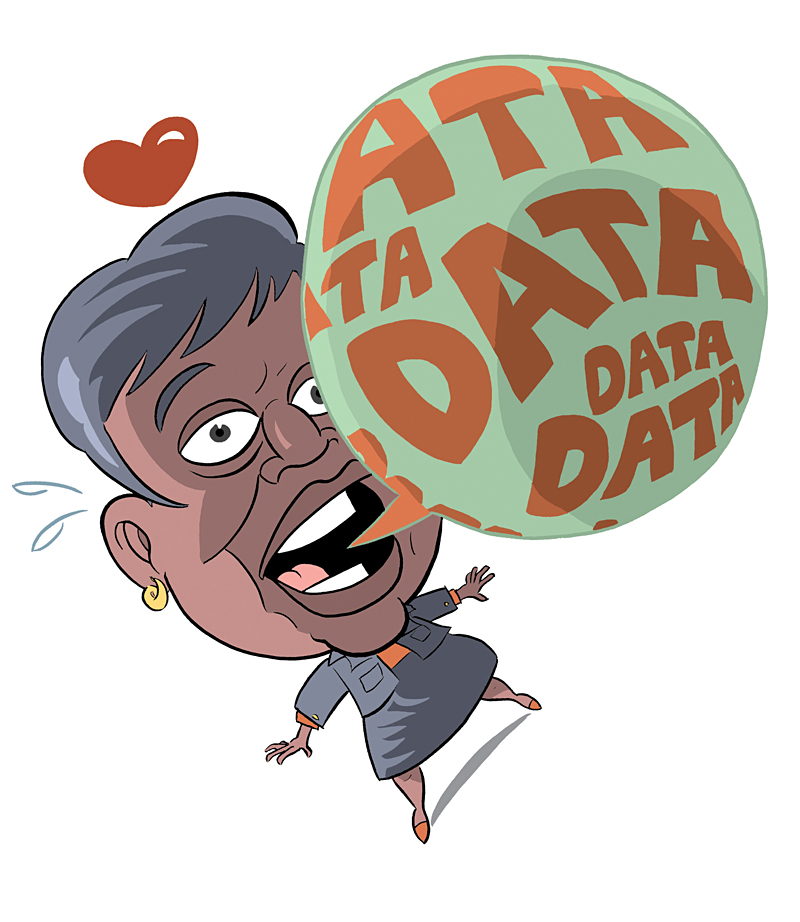After facing sharp criticism in recent parent surveys, suffering no-confidence votes by teachers, and being told by the school board that she needs to improve her communication skills, Seattle Schools Superintendent Maria Goodloe-Johnson gave her first-ever “state of the district” address last week.
Inspiration, and other intangible leadership traits, have never been the superintendent’s strong suit, and that continues to be the case. Instead, the superintendent showed off what she knows how to communicate best, and what will clearly be her legacy: data.
From the moment Goodloe-Johnson walked in the door in 2007, she has talked about reshaping district policy according to the “data.” And she has made sure there’s a lot of it. She instituted new, thrice-yearly “MAP” tests—on top of other state and district evaluations, all of which have made the student testing schedule a dizzying affair. She also created a five-year plan under which student test scores are supposed to rise by a certain amount, and a “district scorecard” that looks at overall results.
And now she’s giving the public yet more data. Coinciding with last week’s address, she released new “school reports” that offer lots of statistics for each individual school, as well as a ranking based largely on test scores.
All this data certainly furthers the district goal of “transparency.” Speaking at Mercer Middle School, the superintendent was up-front about the mediocre results she had to convey. Test scores went down in several areas, including fourth-grade math.
But is education really just about the numbers? The superintendent may not really believe it. She sends her first-grade daughter to South Shore K–8—a school that has seen a lot of parent and staff enthusiasm (as well as financial support from philanthropist Stuart Sloan) but mixed test results. On a scale of 1 to 5 (with 1 the lowest), South Shore rates a 2 on its report card, making it one of the worst-ranked schools in the district.








